Overview
Social Safety Theory hypothesizes that developing and maintaining friendly social bonds is a fundamental organizing principle of human behavior and that threats to social safety are a critical feature of psychological stressors that increase risk for disease. Central to this formulation is the fact that the human brain and immune system are principally designed to keep the body biologically safe, which they do by continually monitoring and responding to social, physical, and microbial threats in the environment. Because situations involving social conflict, isolation, devaluation, rejection, and exclusion historically increased risk for physical injury and infection, anticipatory neural–immune reactivity to social threat was likely highly conserved. This neurocognitive and immunologic ability for humans to symbolically represent and respond to potentially dangerous social situations is ultimately critical for survival. When sustained, however, this multilevel biological threat response can increase individuals’ risk for several inflammation-related disease conditions that dominate present-day morbidity and mortality.
Article Download
- Annual Review of Clinical Psychology (limited access)
- PDF Download (free access)
Social Safety Journal Club!
Back by popular demand, the Social Safety Journal Club! Read the article and book an online lab/journal club meeting with Dr. Slavich. Journal clubs are 50 minutes and include a 10-minute overview of Social Safety Theory followed by 40 minutes of Q&A and discussion! Interesting in discussing or pursuing these ideas? To setup a Journal Club time, just email us!
Strategies for Promoting Social Safety & Reducing Social Threat
Do you have an intervention that should be added to the list below? Great! Please send it to us using the lab email address on the Contact Page!
| Intervention | Possible mechanism of action | Example reference(s) |
| Individual | ||
| Cognitive behavior therapy | Increase social engagement and reduce social threat–related thoughts and beliefs | Clark & Beck 1999, Hofmann & Otto 2017, Shields et al. 2020 |
| Acceptance and commitment therapy | Develop cognitive flexibility to notice, accept, and embrace past social threats | Hayes et al. 2009 |
| Mindfulness meditation | Bring awareness to the present, which is typically absent of social threat | Creswell et al. 2014 |
| Loving-kindness and compassion meditation | Enhance positive emotional states of kindness and compassion toward others | Hofmann et al. 2011 |
| Forgiveness therapy | Reduce negative thoughts and emotions induced by offenders/aggressors | Akhtar & Barlow 2018, Worthington 2013 |
| Self-distancing | Reduce the negativity of past aversive events by increasing distance/perspective | Kross & Ayduk 2017 |
| Stress mind-set interventions | View social threat as an enhancing rather than debilitating experience | Crum et al. 2017 |
| Acetaminophen administration | Reduce neurobiological signaling that subserves social pain and rejection | DeWall et al. 2010, Slavich et al. 2019 |
| Safety learning | Remodel neural networks underlying anxiety, fear, and threat | Meyer et al. 2019 |
| Family | ||
| Nurturant parenting training | Strengthen familial relationships | Miller et al. 2014 |
| Family cohesion training | Promote social caring, interpersonal connection, and family cohesion | King et al. 2019 |
| School | ||
| Social belonging interventions | Increase social connection, cohesion, belonging, affiliation, and inclusion; reappraise social cues and adversity | Allen et al. 2016, Borman et al. 2019, Patton et al. 2006 |
| Mere belonging interventions | Enhance social connection and belonging with socially shared goals | Walton & Cohen 2011 |
| Identity safety interventions | Foster sense that one’s identity and values are accepted and welcome | Goyer et al. 2019 |
| Community/society | ||
| Reduce bias | Decrease instances of prejudice and discrimination | Eberhardt 2019 |
| Prevent bullying | Reduce experiences of social aggression and exclusion | Williams & Nida 2014 |
| Promote social connection | Decrease loneliness and increase social interaction and belonging | Holt-Lunstad et al. 2017 |
| Build empathy | Promote social connection, caring, and empathy toward others | Zaki 2019 |
References
Akhtar S, Barlow J. 2018. Forgiveness therapy for the promotion of mental well-being: a systematic review and meta-analysis. Trauma Violence Abuse 19:107–22
Allen KA, Vella-Brodrick D, Waters L. 2016. Fostering school belonging in secondary schools using a socio-ecological framework. Educ. Dev. Psychol. 33:97–121
Borman GD, Rozek CS, Pyne J, Hanselman P. 2019. Reappraising academic and social adversity improves middle school students’ academic achievement, behavior, and well-being. PNAS 116:16286–91
Clark DA, Beck AT. 1999. Scientific Foundations of Cognitive Theory of Depression. New York: Wiley
Creswell JD, Pacilio LE, Lindsay EK, Brown KW. 2014. Brief mindfulness meditation training alters psychological and neuroendocrine responses to social evaluative stress. Psychoneuroendocrinology 44:1–12
Crum AJ, Akinola M, Martin A, Fath S. 2017. The role of stress mindset in shaping cognitive, emotional, and physiological responses to challenging and threatening stress. Anxiety Stress Coping 30:379–95
DeWall CN, MacDonald G, Webster GD, Masten CL, Baumeister RF, et al. 2010. Acetaminophen reduces social pain: behavioral and neural evidence. Psychol. Sci. 21:931–37
Eberhardt JL. 2019. Biased: Uncovering the Hidden Prejudice That Shapes What We See, Think, and Do. New York: Viking
Goyer JP, Cohen GL, Cook JE, Master A, Apfel N, et al. 2019. Targeted identity safety interventions cause lasting reductions in discipline citations among ethnic-minority boys. J. Personal. Soc. Psychol. 117:229–59
Hayes SC, Strosahl KD, Wilson KG. 2009. Acceptance and Commitment Therapy. Washington, DC: Am. Psychol. Assoc.
Hofmann SG, Grossman P, Hinton DE. 2011. Loving-kindness and compassion meditation: potential for psychological interventions. Clin. Psychol. Rev. 31:1126–32
Hofmann SG, Otto MW. 2017. Cognitive Behavioral Therapy for Social Anxiety Disorder: Evidence-Based and Disorder-Specific Treatment Techniques. New York: Routledge. 2nd ed.
Holt-Lunstad J, Robles TF, Sbarra DA. 2017. Advancing social connection as a public health priority in the United States. Am. Psychol. 72:517–30
King CA, Arango A, Kramer A, Busby D, Czyz E, et al. 2019. Association of the youth-nominated support team intervention for suicidal adolescents with 11- to 14-year mortality outcomes: secondary analysis of a randomized clinical trial. JAMA Psychiatry 76:492–98
Kross E, Ayduk O. 2017. Self-distancing: theory, research, and current directions. Adv. Exp. Soc. Psychol. 55:81–136
Meyer HC, Odriozola P, Cohodes EM, Mandell JD, Li A, et al. 2019. Ventral hippocampus interacts with prelimbic cortex during inhibition of threat response via learned safety in both mice and humans. PNAS 116:26970–79
Miller GE, Brody GH, Yu T, Chen E. 2014. A family-oriented psychosocial intervention reduces inflammation in low-SES African American youth. PNAS 111:11287–92
Patton GC, Bond L, Carlin JB, Thomas L, Butler H, et al. 2006. Promoting social inclusion in schools: a group-randomized trial of effects on student health risk behavior and well-being. Am. J. Public Health 96:1582–87
Shields GS, Spahr CM, Slavich GM. 2020. Psychosocial interventions and immune system function: a systematic review and meta-analysis of randomized controlled trials. JAMA Psychiatry. In press.
Slavich GM, Shields GS, Deal BD, Gregory A, Toussaint LL. 2019. Alleviating social pain: a double-blind, randomized, placebo-controlled trial of forgiveness and acetaminophen. Ann. Behav. Med. 53:1045–54
Walton GM, Cohen GL. 2011. A brief social-belonging intervention improves academic and health outcomes of minority students. Science 331:1447–51
Williams KD, Nida SA. 2014. Ostracism and public policy. Policy Insights Behav. Brain Sci. 1:38–45
Worthington EL Jr. 2013. Forgiveness and Reconciliation: Theory and Application. New York: Routledge

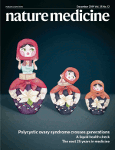
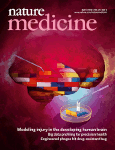

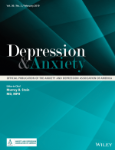
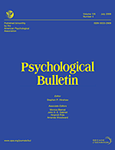
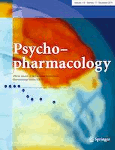

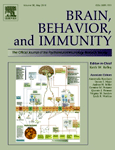
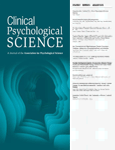
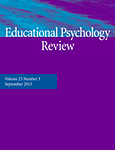
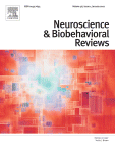
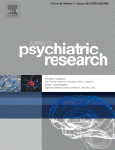
 Chronic Inflammation is Long Lasting, Insidious, and Dangerous
Chronic Inflammation is Long Lasting, Insidious, and Dangerous
 Popular People Live Longer
Popular People Live Longer
 Could a stress vaccine actually work?
Could a stress vaccine actually work?
 Is Depression a Kind of Allergic Reaction?
Is Depression a Kind of Allergic Reaction?
 Obesity and Depression: Symptoms of a Common Cause?
Obesity and Depression: Symptoms of a Common Cause? Researchers Take a Closer Look at the Most Common and Powerful Triggers of Depression
Researchers Take a Closer Look at the Most Common and Powerful Triggers of Depression Social Rejection May Hurt Our Health
Social Rejection May Hurt Our Health Early
Adversity, Adult Misery: How Small Events Trigger Depression
Early
Adversity, Adult Misery: How Small Events Trigger Depression Social
Rejection Linked to Inflammation
Social
Rejection Linked to Inflammation How
Teen Rejection Can Lead to Chronic Disease Later in Life
How
Teen Rejection Can Lead to Chronic Disease Later in Life Social
Rejection Could Affect Body's Immune System, Study Suggest
Social
Rejection Could Affect Body's Immune System, Study Suggest Stress of Coaching Can Add up Quick in the NFL
Stress of Coaching Can Add up Quick in the NFL